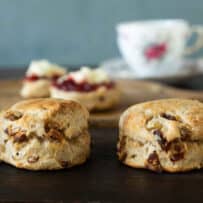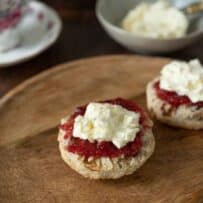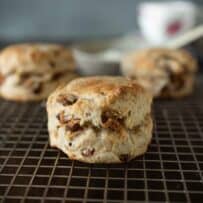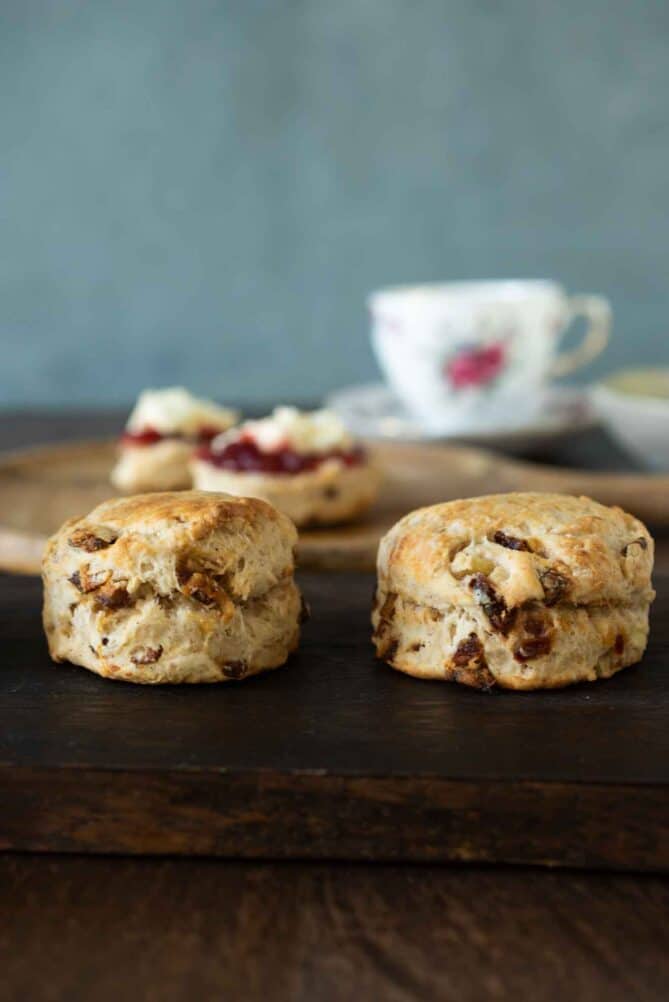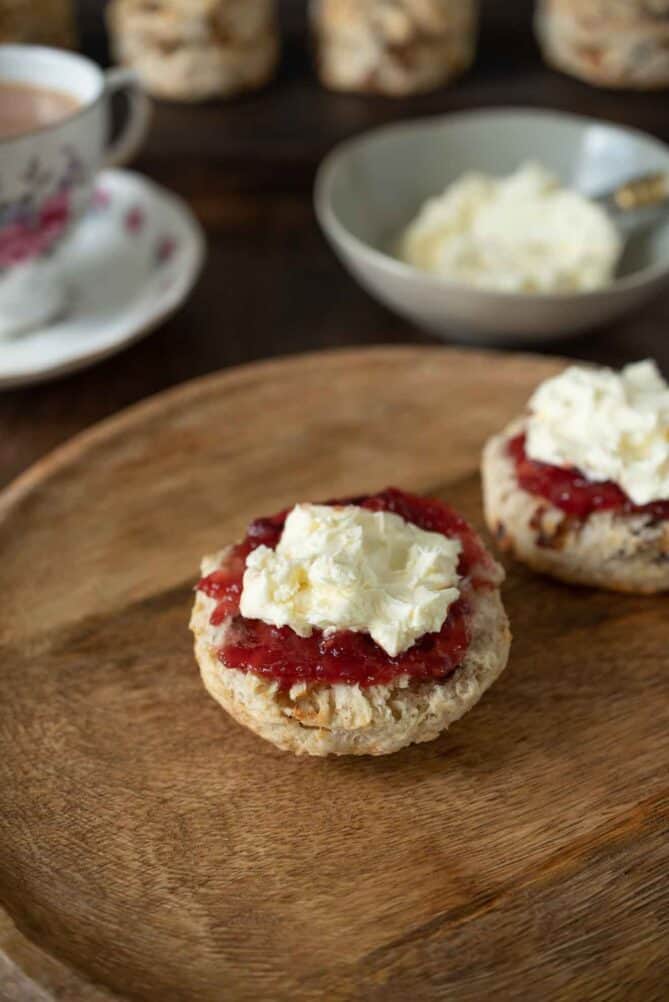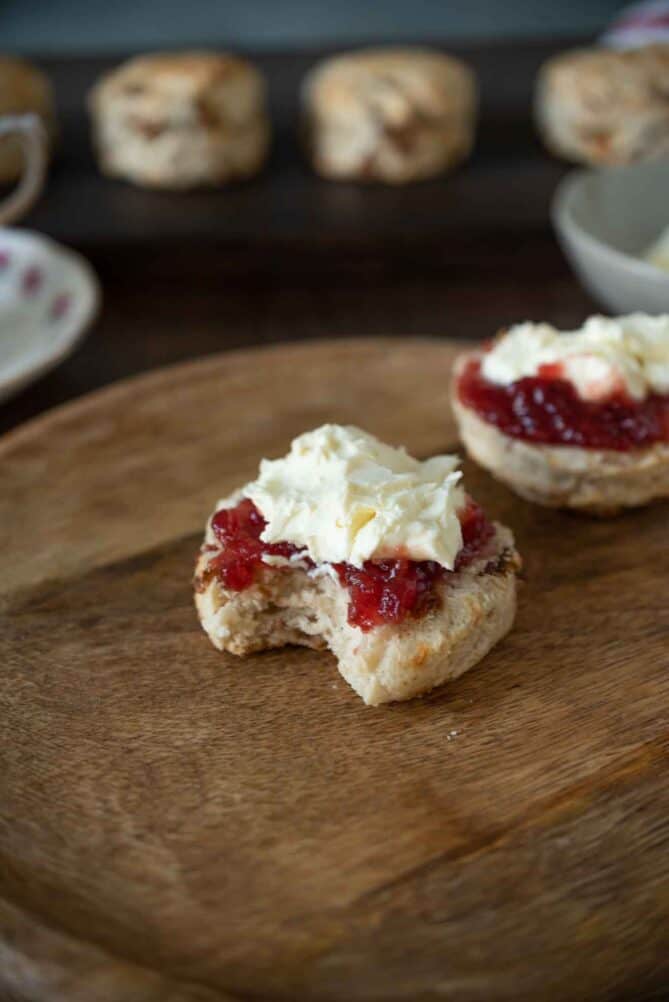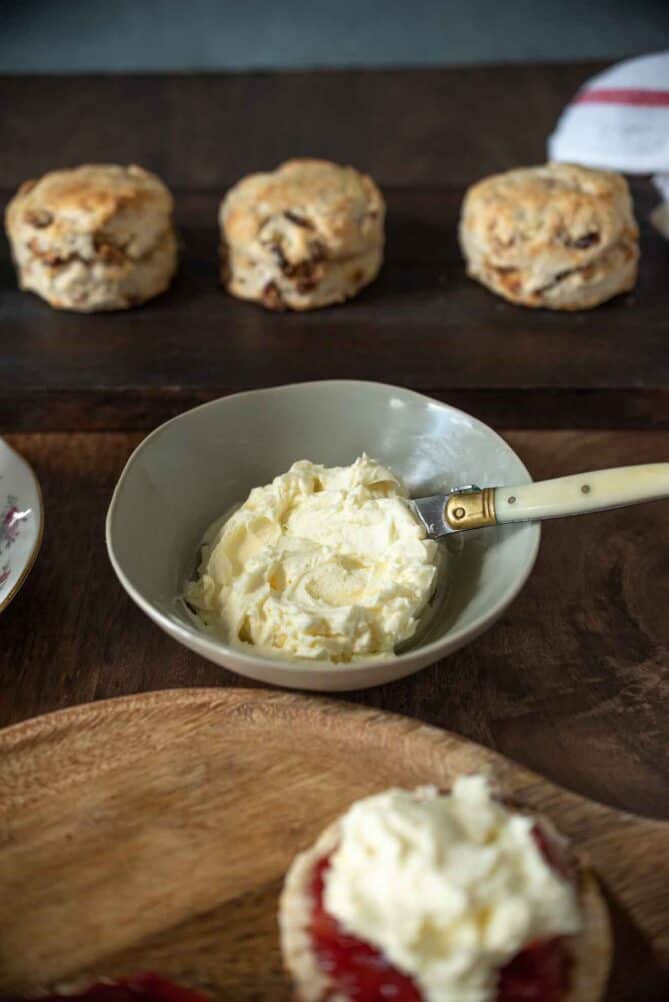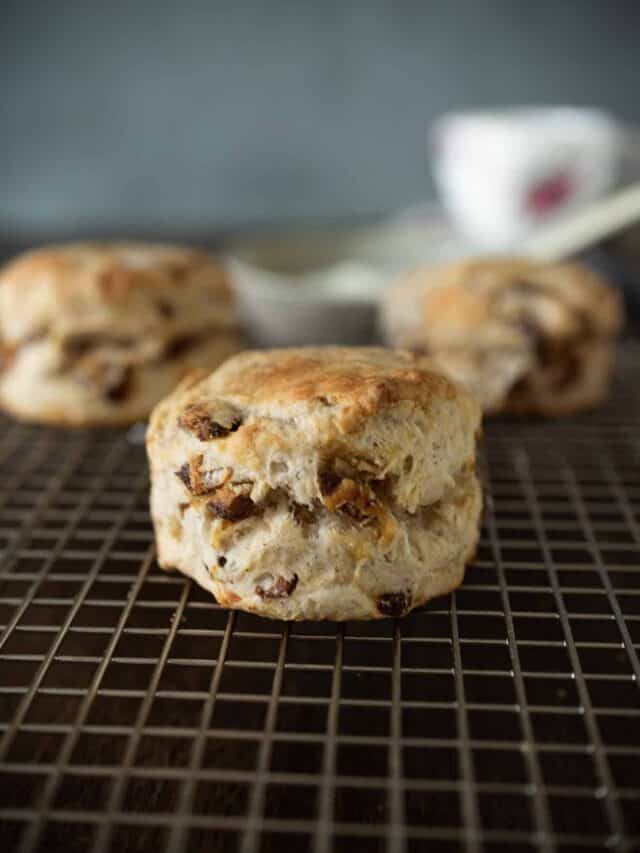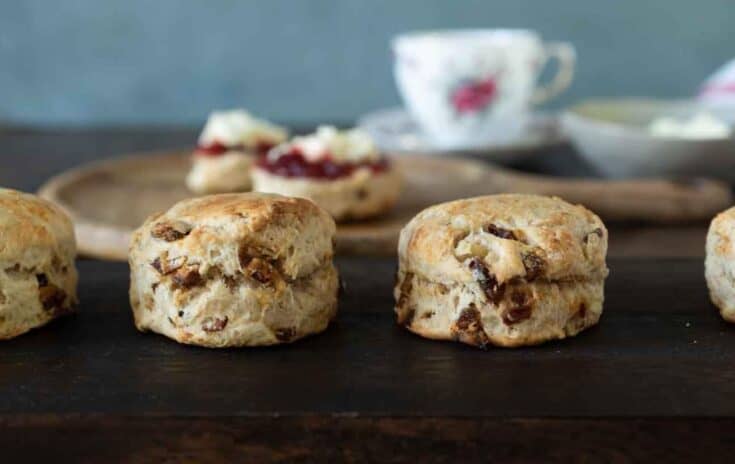Fall/autumn is either here (or just around the corner) and it’s my favorite time of year for both food and weather. I get to drink all the English tea I want and always prefer to enjoy it with one of my native British scones. The scone, which is actually pronounced ‘scon’, and not ‘scoan’ (as so many people incorrectly mis-pronounce it) was once only a British thing but has now gained global popularity.
British and American Scone Difference
Classic English Scones are round and American scones are usually triangular shaped. Unlike many American versions, the English scone never, ever has a sugary glaze drizzled on top. Instead they are served with jam and Clotted Cream. They’re not too sweet because they sometimes have dried fruit inside, as is the case here with mine.
How to Make British Scones
The standard ingredients are all-purpose/plain flour, baking powder, salt, butter and sugar. These scones have added sweet apple, dates, cinnamon and nutmeg. The scones start with rubbing softened butter into the flour and baking powder. I prefer doing this by hand rather than using a mixer.
The best way to mix butter into flour
Lift the butter into your fingers and rub between thumb and fingers until it resembles breadcrumbs. Tip: shake the bowl side to side and all the butter chunks will come to the top so you can see how incorporated they are.
More Autumn/Fall Recipes:
This is just one of my many autumn apple recipes that I love. Here are a few more: Baked Fennel with Apple and Breadcrumbs Apple Pie Pecan Muffins Orange and Apple French Toast Casserole
Freezing and storing scones
You can either freeze the cut scones unbaked or baked. To freeze unbaked scones, place on a tray (without touching so they don’t stick together) and freeze for 3 hours, then transfer them to a sealed container. To bake, defrost at room temperature for 2-3 hours then bake per the recipe.
